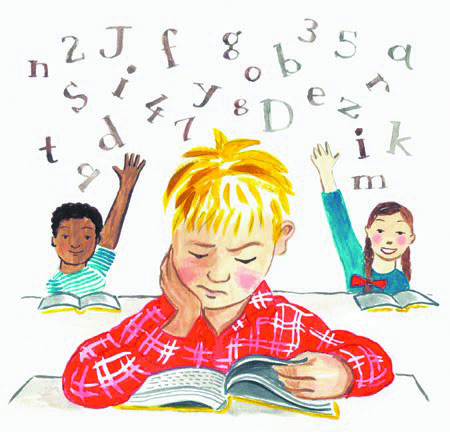There is more to dyslexia than meets the eye
The most common learning disability that not many people fully understand. How to help kids who learn in a different way.
Dyslexia is a common learning disability. Dr Sally Shaywitz, the co-director of the Tale Center for Dyslexia, estimates that “80 to 90% of children who struggle with learning disorders have dyslexia.” Yet, children with dyslexia are often left in the dark because they are not progressing as fast as their peers. People may think that they understand dyslexia but it goes much deeper than just getting your d’s, b’s, p’s and q’s confused. There are actually multiple forms of dyslexia, each with their own unique challenges.
The website MedicineNet contains facts about dyslexia that I found to be incredibly enlightening. One section went into detail about the different types — the three main types are primary dyslexia, secondary or developmental dyslexia and trauma dyslexia.
Primary dyslexia is passed through hereditary genes or genetic mutation. Secondary dyslexia is linked to brain development issues during fetal development that typically diminish as the child matures. Trauma dyslexia is caused by brain trauma to the area of the brain that controls reading and writing.
As stated in a MedicineNet article, primary dyslexia is the most common, it is a dysfunction on the left side of the brain that does not change with age. Early intervention is critical. Kids with this type of dyslexia can be successful throughout their education if they receive the resources and support they require. But there are a few who will continue to struggle with reading, writing and spelling throughout their adulthood either from late intervention or the severity of the individual’s case.
Other types also include visual dyslexia, which is when the brain does not properly interpret visual signs, auditory dyslexia where the brain has issues processing sounds and speech, and dysgraphia which is when a child has difficulty holding and controlling writing utensils.
This learning disability affects one in five students, or 15-20% of the population according to the dyslexia center of Utah. As such, it is important to realize that each person experiences it differently.
Even though this is one of the most common learning disabilities, kids and parents are still struggling to obtain the support from the schools that their children attend. Many schools teach by breaking a concept up into parts — a student is given one step and a time and does not continue until the majority of the class masters the previous step. This learning style works well for dyslexic students since they need to understand the whole picture from the beginning in order to understand why the steps are in place to begin with.
Even with these difficulties, individuals with dyslexia have other strong suits and often thrive in subjects apart from reading. Many are creative and artistic since it is often easier to understand concepts by viewing the entire picture, since art does not have strict rules or a particular order things have to be done in order to have understanding. Many children with dyslexia overcome their disability and grow up doing jobs many people think someone with dyslexia couldn’t, in fact many famous people who are in a wide range of jobs are dyslexic — a quick google search and my mind was blown. Some are actors, musicisions, athletes, scientists and politicians
It is important to realize that people with dyslexia are capable of doing all kinds of activities. They just need more help with reading, writing and spelling. They just need the support from family and schools in order to be successful, as we all do at times.
In some states families have a harder time finding support for their children in schools. This is an issue that I have had a lot of exposure to. My aunt, who lives in Florida, is currently having trouble getting her son the help he needs. She shares the struggles she has dealing with the schools and how they fail to benefit her son.
But despite their difficulties, she also looks at the positives that come with dyslexia and highlights the ways in which her son excels in other subjects. She also remains positive about the progress he makes in school, even with the obstacles he faces every day. Instead of viewing success as individual excellence in every subject, we should look at the subjects that an individual is successful in, celebrate those and offer the support that is needed in those that they struggle with.
If people would look at dyslexia in a more positive light and understand that these kids just learn in a different way, it would change their perspective of school and show that they are capable of doing anything. If the schools would stop enforcing one standardized way of learning and try alternative methods, not only would it benefit the dyslexic students, but it would also teach other students new ways of looking at the same problems.


